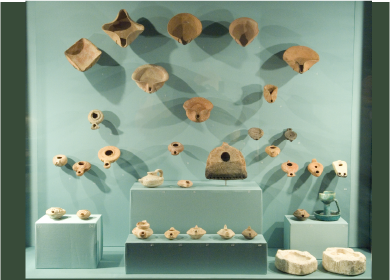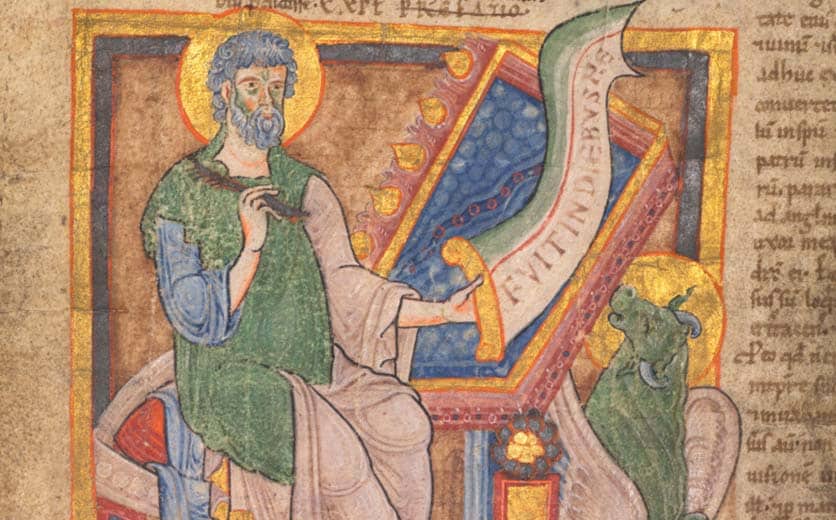In the archaeology of the Levant, pottery is essential for forming and testing many hypotheses. This is because pottery was ubiquitous, ceramic is a more or less permanent medium, and in any given period, potters in a region made their vessels in the same way.
Archaeologists use pottery to answer four basic questions. The most basic is about chronology: when was an installation, building, or town founded, abandoned, rebuilt, and abandoned for good (if it was)? Second, what was the ethnicity of a town’s or region’s inhabitants? Third, was a town relatively isolated, or did it trade with neighbors near and far? And fourth, what activity sets did people perform in the places the pottery was found (e.g., food preparation, food storage and distribution, religious activities, illumination, and of course pottery production)? This article will discuss the first question: the use of pottery for dating.
What was ancient pottery made of?
When discussing pottery, it is necessary to distinguish between clay and ceramic. Clay is a fine-grained sediment with particles less than two microns (two thousandths of a millimeter) in diameter. When it becomes wet again, dry clay returns to a paste-like consistency. Ceramic, by contrast, is essentially a human-made stone created by firing clay at temperatures between 600 and 1200 degrees Celsius (around 1100 to 2300 degrees Fahrenheit). Ceramic can break and erode, but it will retain its shape and hardness even when immersed in water. In the Levant, the invention of ceramic around 10,000 years ago was an important technological advancement, for clay could be shaped to make everything from bricks to ovens to figurines to pots, and production created far less waste than some other industries.
How does pottery help scholars date ancient activities?
The properties of a ceramic vessel indicate the period in which it was made. In the pottery of the Hellenistic and Roman periods, for example, four properties in particular are important: shape, ware, fabric, and color. [1] Even in vessels of the same form, the shape changed over time. For example, cooking pot necks become dramatically taller and thinner in the late Hellenistic period. Changes in shape are clearest at the rim; hence, broken pieces (“sherds”) from rims are called “indicator” sherds because, more than sherds from other parts of the vessel, they indicate when it was made. [2] Ware designates the class of pottery. Archaeologists usually distinguish “crude ware” (relatively coarse vessels for everyday use) from “fine ware” (finely crafted vessels reserved for special uses). [3] Fabric refers to the size of particles in the clay and its “inclusions” (non-clay materials), whether naturally occurring or added by the potter. [4] Color indicates something about the firing process, such as the temperature of the kiln and the presence of oxygen during firing. It can also reveal the existence of some minerals. Iron oxide, for example, creates red ceramic if it is fired in the presence of oxygen (“oxidation firing”).
For these reasons, pottery is the key evidence for dating many human activities: building structures and installations (kilns, ovens, pools), laying floors, and repairing walls. The latest pottery sherds in a “locus” (any three-dimensional feature, including a soil layer) tell archaeologists when the locus was made. Using crude wares, archaeologists can usually determine this within about one hundred years, and sometimes they can trim down that timespan. If, for example, a locus contains many sherds that are typically dated to the Early Roman period (somewhere between 37 BCE and 70 CE) and a few that date to the Late Hellenistic period (150–37 BCE or so), they have some (limited) evidence to argue that the locus dates to the first part of the Early Roman period.
Ceramic oil lamps help. In the Roman period, production of some types of lamps ceased with the destruction of Jerusalem in 70 CE, whereas production of others began soon thereafter and stopped around 135 CE, the year the Bar Kokhba revolt ended. A locus that yields pottery dated to the Middle Roman period (70 to 250 or so), together with only the types of oil lamps made between 70 and 135 CE, was probably created during the first half of that period.
In conjunction with pottery, coins are crucial for establishing dates. Archaeologically speaking, coins provide a terminus post quem (“end after which”): that is, an earliest possible date for the context in which the coin was found. Accordingly, in a locus that contains pottery and lamps, the latest forms of which cease to be produced in the late first century, the latest coins found in the locus allow archaeologists to narrow the dates during or after which the soil must have been deposited, either by the reign of the individual shown on the coin’s obverse or by the year the coin was minted.
Pottery is one type of material culture, yet it reveals much, especially when read with other information. At archaeological sites of the Southern Levant during biblical periods, pottery provides a rich source of information to archaeologists who wish to understand the cultures and ways of life of ancient peoples.
Bibliography
- Gitin, Seymour, ed. The Ancient Pottery of Israel and Its Neighbors from the Iron Age through the Hellenistic Period. 2 vols. Jerusalem: Israel Exploration Society, 2015.
- Cline, Eric. Biblical Archaeology: A Very Short Introduction. Oxford, UK: Oxford University Press, 2009.
- Berlin, Andrea. “Household Judaism.” Pages 208–15 in Life, Culture, and Society. Vol. 1 of Galilee in the Late Second Temple Periods. Edited by David A. Fiensy and James Riley Strange. Minneapolis: Fortress, 2014.
- Reed, Jonathan. The HarperCollins Visual Guide to the New Testament: What Archaeology Reveals about the First Christians. New York: HarperOne, 2007.
- Magness, Jodi. Stone and Dung, Oil and Spit: Jewish Daily Life in the Time of Jesus. Grand Rapids: Eerdmans, 2011.




